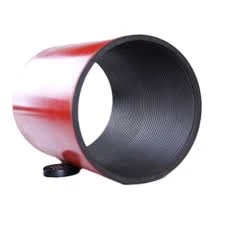- Afrikaans
- Albanian
- Amharic
- Arabic
- Armenian
- Azerbaijani
- Basque
- Belarusian
- Bengali
- Bosnian
- Bulgarian
- Catalan
- Cebuano
- Corsican
- Croatian
- Czech
- Danish
- Dutch
- English
- Esperanto
- Estonian
- Finnish
- French
- Frisian
- Galician
- Georgian
- German
- Greek
- Gujarati
- Haitian Creole
- hausa
- hawaiian
- Hebrew
- Hindi
- Miao
- Hungarian
- Icelandic
- igbo
- Indonesian
- irish
- Italian
- Japanese
- Javanese
- Kannada
- kazakh
- Khmer
- Rwandese
- Korean
- Kurdish
- Kyrgyz
- Lao
- Latin
- Latvian
- Lithuanian
- Luxembourgish
- Macedonian
- Malgashi
- Malay
- Malayalam
- Maltese
- Maori
- Marathi
- Mongolian
- Myanmar
- Nepali
- Norwegian
- Norwegian
- Occitan
- Pashto
- Persian
- Polish
- Portuguese
- Punjabi
- Romanian
- Russian
- Samoan
- Scottish Gaelic
- Serbian
- Sesotho
- Shona
- Sindhi
- Sinhala
- Slovak
- Slovenian
- Somali
- Spanish
- Sundanese
- Swahili
- Swedish
- Tagalog
- Tajik
- Tamil
- Tatar
- Telugu
- Thai
- Turkish
- Turkmen
- Ukrainian
- Urdu
- Uighur
- Uzbek
- Vietnamese
- Welsh
- Bantu
- Yiddish
- Yoruba
- Zulu
bull plug pressure rating
Understanding Bull Plug Pressure Ratings A Comprehensive Overview
Bull plugs, commonly used in various industrial applications, serve as essential components for sealing and controlling pressure within piping systems. Understanding the pressure rating of bull plugs is crucial for ensuring operational efficiency, safety, and compliance with industry standards.
Understanding Bull Plug Pressure Ratings A Comprehensive Overview
Typically, bull plugs are categorized by their pressure ratings, often specified using the American National Standards Institute (ANSI) or the American Society of Mechanical Engineers (ASME) standards. Pressure classes usually range from 150 psi (pounds per square inch) to over 2500 psi, depending on the application's requirements. Selecting the appropriate rating is imperative, as using a bull plug with insufficient pressure ratings can lead to leaks or catastrophic failures, risking both equipment damage and personnel safety.
bull plug pressure rating

Another important aspect to consider is the temperature rating of the bull plug. Different materials respond differently to temperature variations, impacting their pressure ratings. For instance, a stainless steel plug rated for high pressure at ambient temperatures may not perform adequately under extreme heat or cold scenarios. Therefore, it's essential to evaluate the specific environmental conditions the bull plug will encounter.
Installation practices also play a significant role in the performance of bull plugs. Proper installation techniques, including torque specifications and the use of appropriate sealing materials, can significantly enhance the performance and longevity of the plug. Regular maintenance checks are equally important to identify any signs of wear or potential failure before they result in serious issues.
In conclusion, the pressure rating of bull plugs is a vital consideration in industrial applications. By understanding the various factors that influence these ratings—including material properties, design standards, and environmental conditions—engineers and technicians can make informed decisions to ensure the integrity and safety of their piping systems. Moreover, adhering to best practices in installation and maintenance will further enhance the reliability and performance of bull plugs in demanding operational environments.
-
Tubing Pup Joints: Essential Components for Oil and Gas OperationsNewsJul.10,2025
-
Pup Joints: Essential Components for Reliable Drilling OperationsNewsJul.10,2025
-
Pipe Couplings: Connecting Your World EfficientlyNewsJul.10,2025
-
Mastering Oilfield Operations with Quality Tubing and CasingNewsJul.10,2025
-
High-Quality Casing Couplings for Every NeedNewsJul.10,2025
-
Boost Your Drilling Efficiency with Premium Crossover Tools & Seating NipplesNewsJul.10,2025







